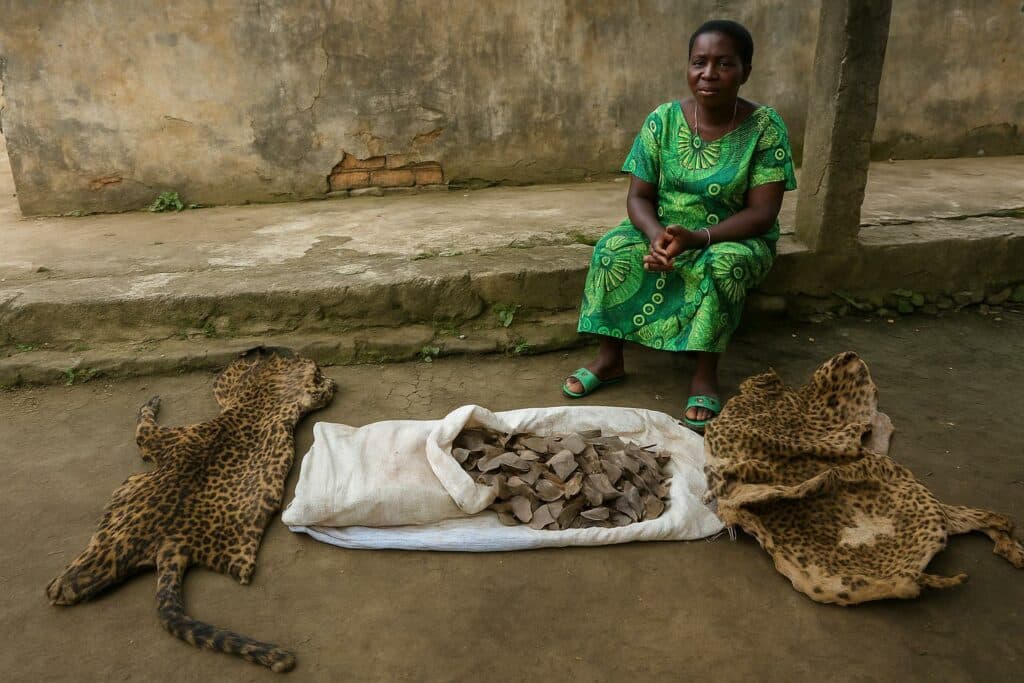Courtrooms Poised for High-Profile Wildlife Hearings
On 15 and 16 October the calm corridors of the Owando and Impfondo courts will turn into focal points for Central African conservation. Two defendants, arrested in separate operations conducted by the National Gendarmerie and the Forestry and Water services with technical backing from the Wildlife Law Enforcement Support Project, stand accused of attempting to commercialise trophies from fully protected species. The dual schedule, unusual for offences of this nature, concentrates national attention on the judiciary’s role in dismantling illicit fauna supply chains.
Owando: The Ivory File
The first dossier, to be examined on 15 October in the Cuvette’s departmental capital, centres on a suspect apprehended on 29 November 2024. Investigators say he was caught red-handed with three ivory tips— the macabre arithmetical equivalent of two slaughtered elephant calves. According to the prosecution, the ivory travelled quietly from Etoumbi in neighbouring Cuvette-Ouest before being stored in Owando, awaiting a clandestine buyer. Possession, transportation and attempted sale of such trophies fall squarely under the offences defined by Law 37-2008 of 28 November 2008 on wildlife and protected areas.
Impfondo: From Panther Hide to Evidence
Barely twenty-four hours after the Owando proceedings, the Tribunal of Impfondo in Likouala will weigh a second case involving a female defendant arrested on 25 August. Seized items include two panther skins together with a significant cache of pangolin scales and claws. The prosecution will seek to establish a continuous chain of custody linking the accused to these trophies, all drawn from species the Republic of Congo designates as fully protected. Judicial sources indicate that the evidence has been conserved under sealed conditions pending the hearing, reflecting heightened procedural vigilance in wildlife crime matters.
Law 37-2008: A Deterrent with Teeth
Both defendants face statutory exposure to penalties of up to five years’ imprisonment and fines that may reach five million CFA francs apiece. By providing custodial sanctions and financial disincentives, Law 37-2008 aims to recalibrate the risk-reward ratio that fuels the illegal fauna trade. Legal practitioners observe that the text also empowers courts to order the confiscation and eventual destruction of seized trophies, thereby removing them from any potential re-entry into illicit circuits. The converging trials therefore offer a litmus test for the consistency with which these provisions are applied across jurisdictions.
Species at Stake and a National Commitment
Elephants, panthers and pangolins occupy emblematic status in Congo-Brazzaville’s ecological tapestry, yet each remains highly vulnerable to poaching driven by transnational demand. Conservationists argue that the disappearance of these keystone species would reverberate through forest ecosystems, compromising seed dispersal patterns and predator-prey balances. By aggressively prosecuting trafficking infractions, the Congolese authorities reaffirm a policy direction that aligns biodiversity stewardship with long-term socio-economic stability. In the words of a forestry officer reached after the arrests, « every conviction reinforces the message that our natural heritage is not for sale ».
Key Takeaways
The juxtaposition of the Owando and Impfondo hearings crystallises three points. First, inter-service cooperation has become central to intercepting wildlife contraband before it leaves rural nodes. Second, rural tribunals are increasingly asserting competence over complex environmental offences once reserved for urban courts. Third, the forthcoming judgments will signal to would-be traffickers that profitability no longer outweighs prosecutorial certainty.
The Legal-Economic Angle
From a legal perspective, the ceiling of five million CFA francs equates to several years of income for many rural actors, suggesting a meaningful deterrent effect. Economically, dismantling small-scale trafficking cells disrupts the first link in a lucrative international chain, protecting state revenue prospects tied to eco-tourism and sustainable resource management. Analysts will therefore scrutinise whether the pronounced penalties translate into tangible behavioural shifts on the forest floor.

